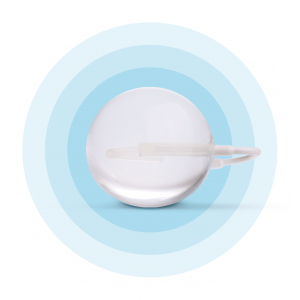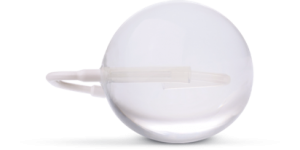
Top-Rated Spatz Balloon – Spatz Medical
Spatz3 is the world’s first and only adjustable intragastric balloon. With Spatz Medical professionals, you can place the Spatz3 gastric balloon in your stomach, and start a new strategy for losing weight quickly and effectively.
Through years of research, our leaders created an intragastric balloon that’s safe, adjustable, and has the highest success rate in the market when compared to competitors. With a success rate of over 84%, Spatz gastric balloon has helped patients lose approximately 31 lbs, on average.
Spatz Balloon Surgery
The overall procedure is very simple and straightforward. Intragastric balloon surgery in Saudi Arabia takes anywhere between 1 and 2 hours. It can occur on an outpatient basis, or in an endoscopic clinic if your general healthcare provider allows it.
We recommend consulting your general healthcare provider and medical professionals at Spatz Medical to understand whether you qualify for the procedure.

Spatz Medical helps all patients achieve peace of mind before and after the procedure. Therefore, we’ve compiled a list of tips to help you undergo the surgery effectively:
Proper Sleep
Before the implantation procedure takes place with your Spatz Medical professional, ensure a good night’s sleep. It can help you react more actively and recover better after the procedure.
Empty Stomach
It’s important to fast for six or more hours before the implantation procedure. If you’re going to have your implantation procedure in the afternoon, make sure you stop eating and drinking starting the night before. Since it can be difficult for most people, you can have clear liquids in the morning, approximately six hours before the procedure.
Traveling Home
Make sure you arrange an escort to take you home. We advise leaning on friends and close friends to drive you home after the procedure. However, you should inform them that the procedure can take anywhere between 15 minutes and 2 hours. You should avoid driving right after the procedure.
Resting Period
The post-procedure recovery period following the mandatory one-hour supervision under your surgeon varies for different patients. While some people require only 1-2 days to recuperate fully, others might require 6-7 days. On average, it takes our patients 4-5 days before they’re ready to get back to their work routine.
Communicating with Doctor
You should stay in touch with the clinic and your doctor after the procedure to communicate any unusual symptoms or signs. If you require support or have any questions, you can always reach out to Spatz Medical professionals for clarity.
We know that it can be difficult to ensure these symptoms during the first phase of weight loss progress with the Spatz3 gastric balloon. However, it also kickstarts great progress because the balloon will work for you (it won’t let you eat)!
Before phase 2 starts, you will have transitioned and the intragastric balloon in your stomach won’t manifest any painful symptoms. You will start feeling full quicker and for a longer time, limiting your food intake. Simultaneously, it will be easier for you to move towards a healthier lifestyle and diet behavior!
There Are Two Main Challenges With Gastric Balloons

Loss of Balloon Effect
Gastric Balloons lose efficiency by the 4th month (on average) and patients start to regain weight.

Balloon Intolerance
Approximately 1 out of 10 patients face early extraction due to intolerance.
The Spatz3 Solution

Volume-Adjust Up
Spatz3 patients can have the balloon volume increased, when needed, to help prevent weight regain and to achieve the industry’s highest weight loss results.

Volume-Adjust Down
With the Spatz3 Adjustable Gastric Balloon, patients can decrease the volume of the balloon to alleviate balloon intolerance.

Weight
loss

Volume-adjust
up (bigger)

Volume-adjust
down (smaller)

Weight Maintenance

Adjustable Gastric Balloon

Highest
success rates
Learn More About The Spatz3 In Our Dedicated YouTube Channel #SpatzAdjustableBalloon
Contact A Spatz3 Representative Near You

